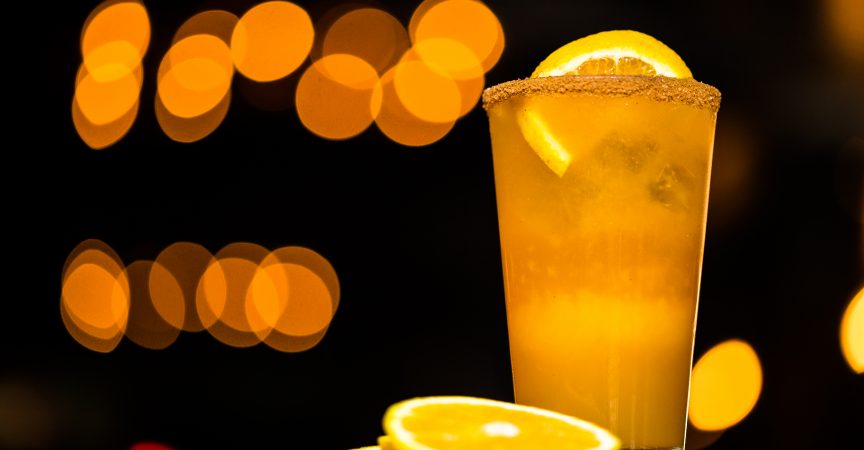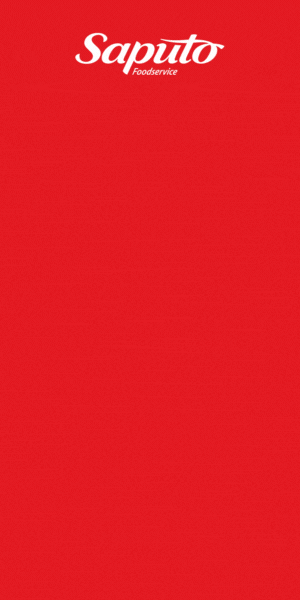Why Value-Added Mocktails Help you Capitalize on the Sober Curious Trend
For many, January and the beginning of the new year, is a time for resolutions. Starting 2020 off on the right foot, consumers may be emphasizing a healthier approach to eating. For some this might mean incorporating more plant-based dishes into their diet, while others may be testing out a ‘sober January’ for 2020 or trying to limit their alcohol consumption. For bars and restaurants, including low or no alcohol options on their menu is a way to improve their bottom line and create a more inclusive dining experience.
Beyond this push after the holiday season, the foodservice industry is currently seeing a resurgence in non-alcoholic or low-alcoholic cocktails. For many, this is strongly tied to the growing millennial and gen Z demographics. According to Jo-Ann McArthur of Nourish Marketing, gen Z are drinking much less alcohol than their parents.
Restaurants Canada’s research shows that in 2013, in Canada, those between the legal drinking age ad 24 years old accounted for 27 per cent of all orders at a bar. In 2018, the share dropped to 13 per cent.This growing ‘sober curious’ movement is not necessarily out of necessity, but more so a push for wellness. A report by Bon Appetit stated, “the market for low and no alcohol beverages is expected to grow by 32 per cent between 2018 and 2022” (1).
Of course, there are still other reasons why someone may reach for a mocktail over a cocktail. Pregnancy, or having to drive remain two constant reasons why a consumer may opt out of alcohol. Considering how vast Canada is, bars and restaurants in more remote areas see most of their clientele driving in, as opposed to major city centres like Toronto that offer easily accessible public transit.
Regardless of the reason behind a customer’s choice, bartenders agree taste remains a top priority for both mock and cocktails. At last year’s RC Show, we saw a resurgence in alcohol-free cocktails.Though gone are the days of the over-the-top, sugary-sweet drinks, mocktails have matured into sophisticated beverages that hold their own on a menu of trendy cocktails.
Brands like Seed Lip, an alcohol-free, distilled spirit are bringing an elevated approach to the (bar) table. With an herbal scent and bold flavours, the newest low and no alcohol drinks serve up an option. Charles Landry, owner of Taverne Midway in Montreal speaks to the impact of bold flavours in mocktails. He says, “A drink with big flavour is an indication of big value for a customer. The perception of value is relative to flavour.”

Photo by Bruno Destombes.
Mocktails, or as Charles names them, ‘zero proof cocktails’, provide an opportunity for a restaurant or bar to grow their bottom line. Without alcohol, the profit margin on mocktails is relatively high. While a cocktail may retail for $9 – $15, a mocktail can be sold for $8 – if a customer believes they are still getting good value for their dollar. Alternatively, a menu without mocktails means that a customer wishing for an alcohol-free drink may order a soft drink, juice, or water which retails for only $2 – $4, or $0 (for tap water).
Another way foodservice operators can ensure a high-value perception for mocktails and capitalize on the sober curious trend is by leveraging caffeine in their alcohol-free drinks. Caffeine provides a quick boost of energy to customers, giving them the little lift they may on a Friday evening after work. It allows customers to remain engaged socially, while not partaking in alcohol. The added benefits of caffeine in a mocktail can be a selling point for customers. This is reciprocated for foodservice operations as more alert customers stay in bars longer, increasing the dollar value of their bill.
Bartender Charles Landry was tasked with putting together three value-added mocktails featuring Red Bull that can be worked into any menu during the holiday season, or beyond.
With impactful flavours that don’t feel or taste like the mocktails you might be more familiar with, these zero-alcohol beverages contain 80 mg of caffeine (similar to a cup of home brewed coffee) and can be inserted easily into a drink program for a more inclusive menu.
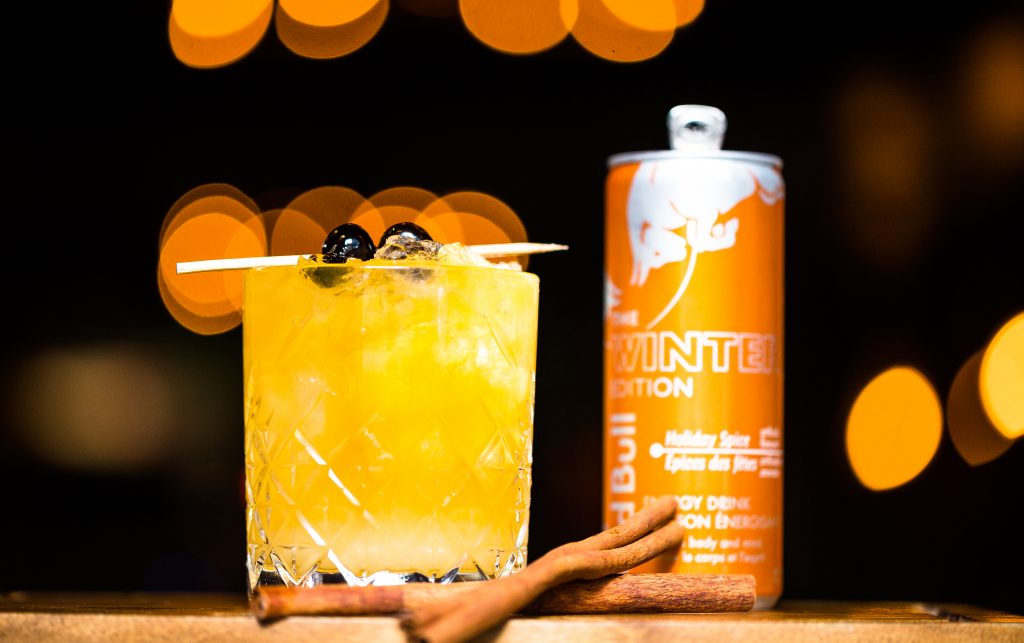
Velvet Spice Mocktail
Serve in a short glass
- 3/4 oz lemon juice
- 1/2 oz ginger syrup
- 1/4 oz cherry syrup
- Add crushed ice
- Top with Red Bull Winter Edition Holiday Spice
- Garnish with cherries and a heavy drizzle of cherry syrup
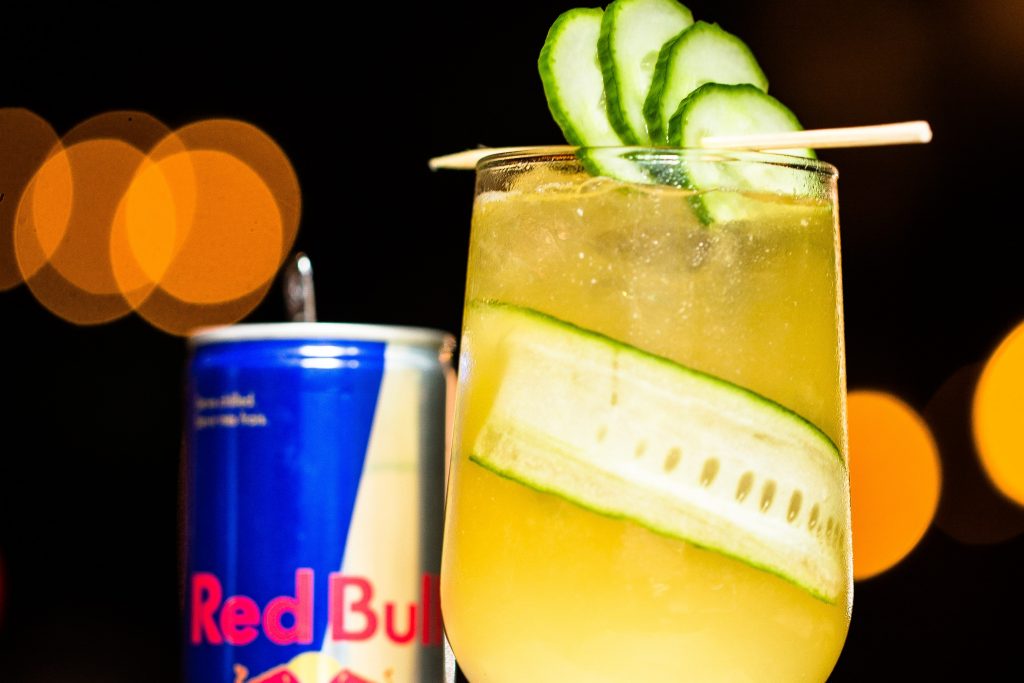
Cucumber Twist Mocktail. Photo by Bruno Destombes.
Cucumber Twist Mocktail
- Using a peeler, peel long, lengthwise slices of cucumber
- Line the inside of the glass with the slices
- Delicately fill the glass with ice
- Add 1/2 oz cucumber syrup
- 1/2 oz orgeat syrup
- 1/2 oz lime juice
- Fill with Red Bull Energy Drink
- Garnish with cucumber
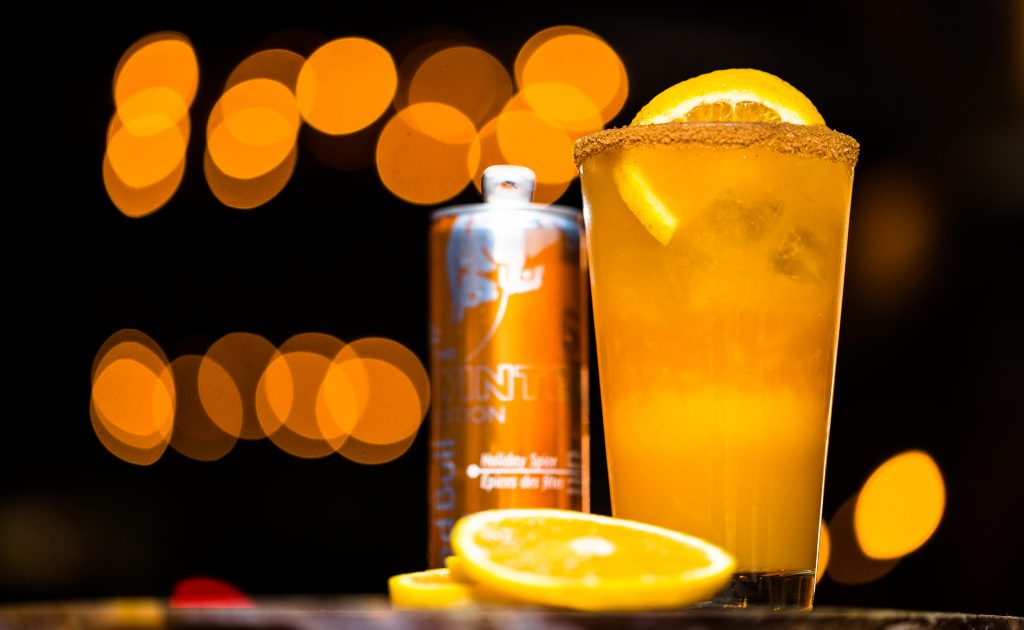
Passion Fruit Sunrise Mocktail
Serve in a long glass
- Rim glass with sugar and cinnamon
- Add 1/4 oz Grenadine to the bottom of the glass
- So as not to mix the grenadine too much, slowly add 2 oz orange juice
- 1 oz passion fruit syrup
- 1/2 oz lime juice
- Top with Red Bull Winter Edition Holiday Spice
- Garnish with sliced orange
Photos by Bruno Destombes



